Bosnia (Croatia) stamps
P=have O=don’t have it
Issues made by the Croat Administration based on Mostar.
See: Yugoslavia stamps
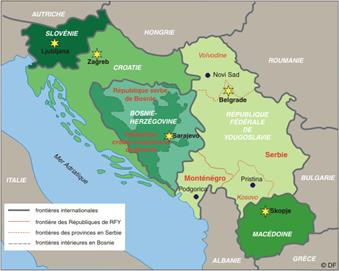
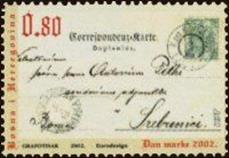
Scott: #91O
Issued: 9.9.2002
Stamp Day
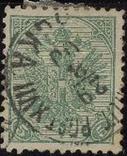 Inside
#91: Bosnia-Herzegovina #14P
Inside
#91: Bosnia-Herzegovina #14P
Postage
stamp may readily describe as a “printed security attached to mail”. The cradle
of the first postage stamp was England where on May 6, 1840, a small sticky
rectangular piece of paper appeared with an imprint and indication of postage.
That was the famous “Black Penny” featuring the profile of Queen Victoria. By
mid-19th century, many postal authorities accepted the new way of payment of
postal services. The first World Postal Union (UPU/WPU) was established in Bern
in 1874, where also appeared philatelists, patient collectors who studied
stamps.
The
first Stamp Day was celebrated in Austria in 1935 when
the Austrian Post issued a stamp for the occasion, and next year this was widely
accepted throughout the world.
H.
von Stephan, who reorganized postal services and established the World Postal
Union, was born on September 9.
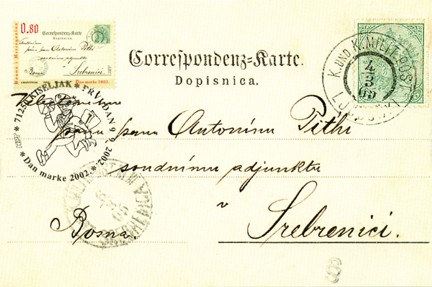
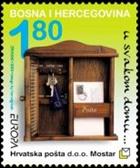
Scott: #99O
Issued: 5.4.2003
Europa 2003 - Poster art
Poster of the Croatian Post Office of Mostar
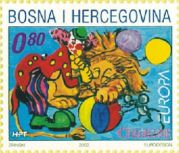 Inside
#99: Bosnia (Croatia) #82O
Inside
#99: Bosnia (Croatia) #82O
A
poster is a publicly displayed advertisement or announcement, generally printed
on paper, with the intention of attracting attention and informing the
passerby. Although printed public
announcements can be found as far back as the 15th century, the beginnings of
poster as we know them today are connected with the 1960s and innovations in
the area of lithography that made fast and inexpensive multicolor printing
possible. The first great poster artist
was a Frenchman, Jules Chéret.
The
posters that Chéret produced in 1867 for the
theatrical performances of the leading actress of the
day, Sarah Bernhardt, influenced the spread of this new art form throughout the
world and attracted other artists to this mode of expression. The posters by Henri de Tolouse-Lautrec
in the late 19th century are lively and picturesque depictions of Parisian
life, and today are of exceptional value to collectors and esteemed works of
art.
In
1894, Alphonse Mucha produced a poster for the
artistic scene for the next decade.
During World War I, posters were the main medium for propaganda. In the
USA, over 20 million posters with 2,500 different designs were
printed in only two years. During the 1920s, Art Deco developed under
the influence of industrial advances and new art trends as the dominant style
for art posters. Although the poster received strong competitions an
advertising medium during the 20th century by other mass media, especially
television, it continues to develop and is everywhere today.
During
the 20th century, printing techniques improved constantly, the personal
computer became a basic tool for the majority of poster artists, and the
dominant styles and schools of posters were changed. The development of the pop
culture of the 1960s provided posters with new impetus. Reproductions of the
famous posters of the 20th century such as Glaser's Dylan, Flagg's I Want You
for the U.S. Army or Capipiell's Maurin
Quina are sold throughout
the world.
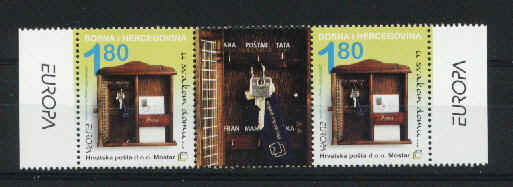
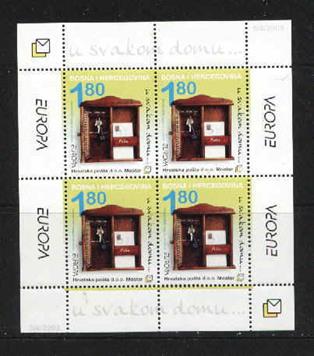
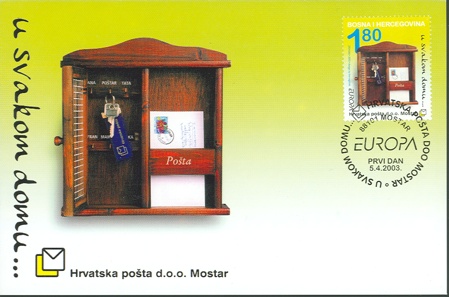
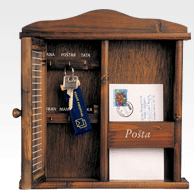

Scott: #151a-dO
Issued: 15.1.2006
50th Anniversary of the First Europa Stamps
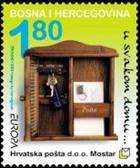 Inside #151c: Bosnia (Croatia) #99O
Inside #151c: Bosnia (Croatia) #99O
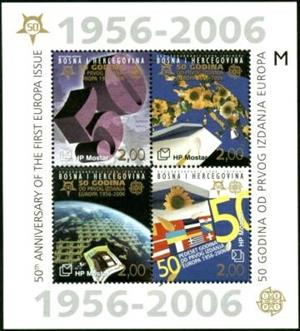
Scott: #151a-dO

Scott: #151e (With
"M")O
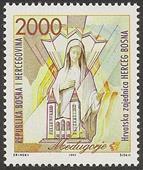
Scott: #151? (Without "M")O
Lou
wrote: The things you find when you're not looking
for them. I was redoing my collection pages for the 50th Anniversary of
Europa Stamps and checked my 2006 scans for the issue at the same time
to make sure it was complete. It was, but I also saw that I had a
poor scan of the s/s, so I went online for a better one. To my surprise, I saw
there were offerings for two different s/s! The s/s I own and which
is also on the sites has a capital M in the upper right-- the other has a
vertical control #. Neither is noted in Scott, so
I had a friend with Michel catalogs check there for me. There is only a note
that the s/s exists with and without a control #. See scan.
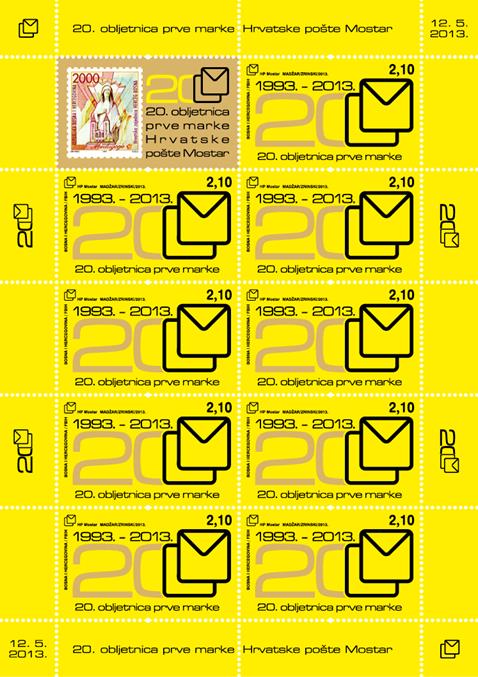
Scott: #286O
Issued: 12.5.2013
The 20th Anniversary of its first stamp
 Inside #286 (On label): Bosnia Herzegovina
Croat Adm #1O
Inside #286 (On label): Bosnia Herzegovina
Croat Adm #1O
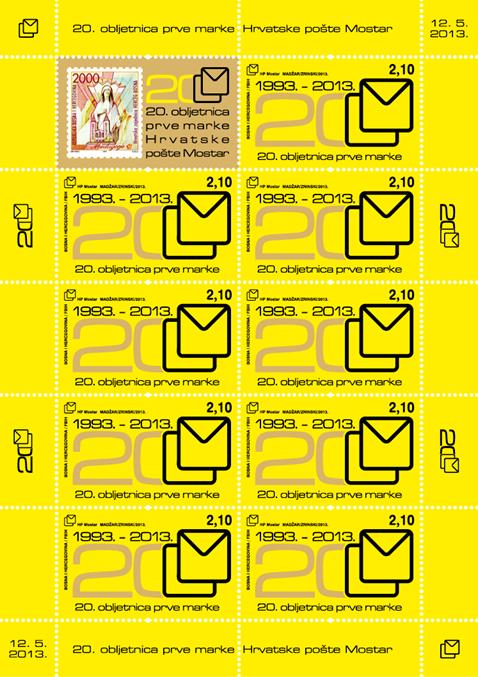
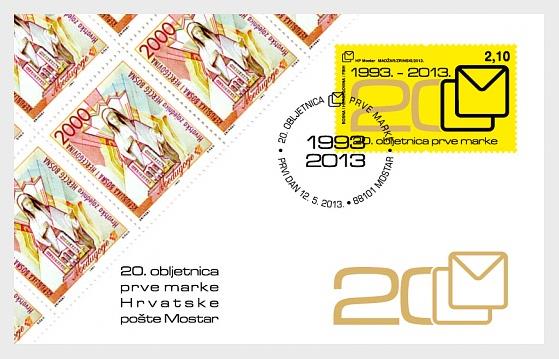
Thanks to Lou Guadagno
Best website related:

http://www.post.ba/about_stamps.php
All stamps of the new states of ex-Yugoslavia
http://membres.lycos.fr/europa_cept/ex-yougoslavia_a.htm
Herzeg Bosnia
http://www.euro-soft.nl/yuclub/
![]()